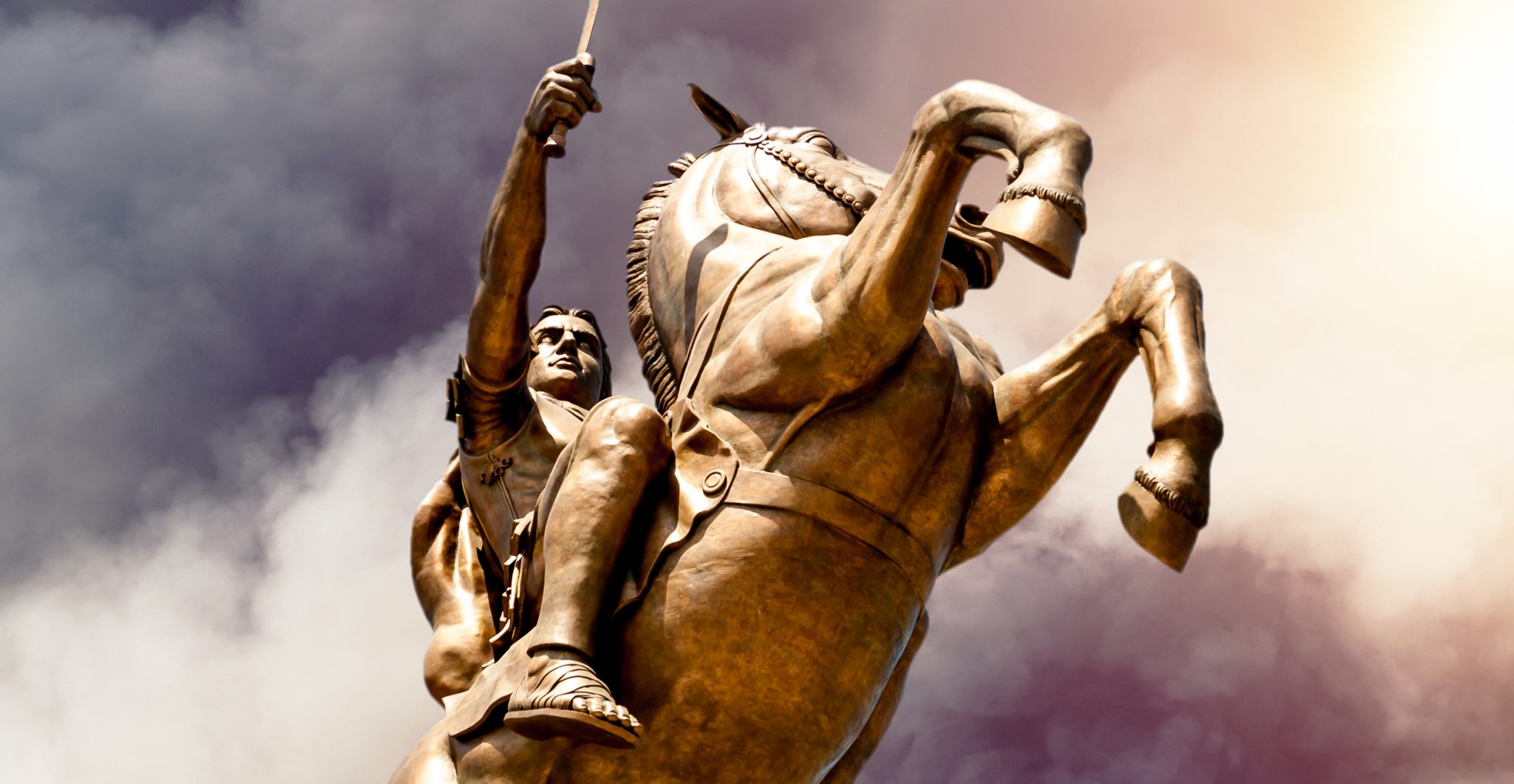War History online presents this Guest Piece from Turin Bridge
Alexander the Great is one of the most legendary kings of all time: in a ten-year period, he conquered 90% of the known world, including the world superpower of his day, Persia. He founded dozens of cities, was worshipped as a god, never lost a single battle and began the process of cultural syncretism across much of Asia. But how did a relatively poor country such as Macedonia accomplish such incredible exploits in a single decade? What made Alexander and his armies so incredibly invincible?
Phalanx
In simple terms, the Macedonian army was split between the cavalry and the infantry. Many of the Macedonians’ enemies also had strong cavalry regiments – the Persians recruited across many areas famous for horsemanship, such as Parthia and the steppes on that count, but they could not stand against the Macedonian infantry. Alexander infantry was arranged in a formation known as a phalanx, an evolution on the earlier hoplite, who had fought so famously at Thermopylae and Plataea.
Much like their Greek hoplite counterparts, phalangites fought using shields and spears. The difference, however, was that the soldiers of the phalanx had their shields strapped to take the weight around their shoulders, leaving both arms free. This meant they could wield a far longer spear, known as a sarissa – a 21 foot-long spear. In battle, the men would be arranged in ranks sixteen deep, with the first five ranks extending outwards and the ranks at the back tilting their spear to deflect missiles. Ultimately this meant that in any given metre of the Macedonian line, there would effectively be dozens of men fighting simultaneously. This made the phalanx a daunting unit for shock warfare, with maximum force being brought to bear.
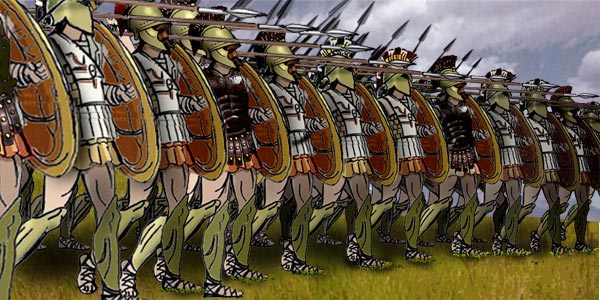
The phalanx was well trained, it had to be strong to carry the long sarissa, and was well-trained in drill. During Alexander’s campaigns, the phalanx was often used to hold and break enemies, even if those enemies were highly equipped or fought in massive numbers. For example, at Guagamela, it was the phalanx that neutralised the Persian chariots and kept Darius’s armies at bay for hours while the cavalry chased the King of Kings from the field. In all of Alexander set-piece battles, the phalanx served as an inexorable anvil, marching through their lightly armoured enemies, with none able to dodge through the wall of spears.
Siege equipment
Alexander’s all-conquering army, like the all-conquering army of Assyria before it, and the all-conquering armies of Rome after it, had a dedicated corps of engineers who built and maintained siege equipment, such as catapults, ballistae and siege towers. This meant that enemies could not simply hide behind walls to force a lengthy and costly siege. The importance of this cannot be overstated; for most of his early campaigns, Alexander was surrounded by wealthy client states of the Persian empire who had access to the sea for supplies and only had to slow him down in order for the Great King to rally his armies. The ability to quickly reduce enemy strongholds quickly broke the back of resistance in southern Anatolia and the Eastern Mediterranean and may be why the satrapy of Egypt surrendered without resistance.
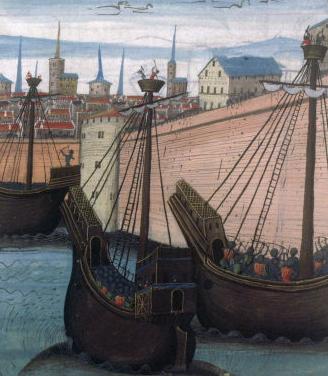
The siege corps came in use when reaching the far ends of his empire. When Alexander was at war with a tribe of Scythians in modern-day Uzbekistan, he was confronted with a large army of mounted archers guarding a river crossing and challenging his forces. Alexander is recorded as using his missile throwers to bombard the Scythians both before and as cover during the crossing – the first instance of an artillery bombardment being used in this way in history. Needless to say, the Scythians were dismayed at this display of firepower and were promptly defeated once the Macedonians crossed the river.
The importance of engineers is perhaps best demonstrated in Alexander’s most famous siege: at Tyre. Although the New City was based on the mainland and was quickly occupied, the Old City was located on a small island off the coast. Tyre was part of a confederation of Phoenician cities with strong navies who were strongly loyal to Persia, and it resisted occupation by Alexander after he insisted on sacrificing in their temple. Being on an island with plentiful food, supply lines, a strong navy, and allies, they trusted in their walls and sea moat to hold off the invader until Darius could catch Alexander on the coast.
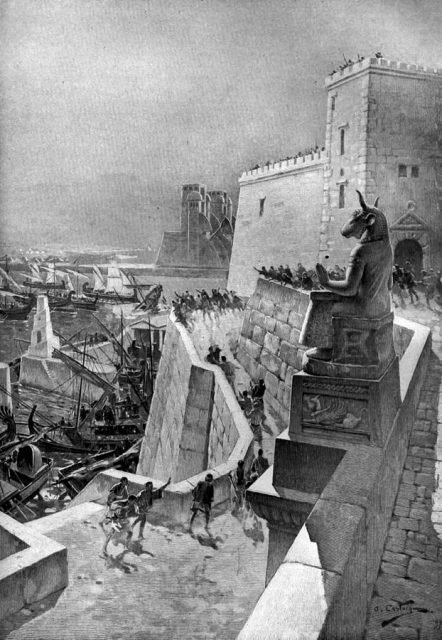
It is here that the value of the engineers quickly becomes apparent. They organised the destruction of the New City, for raw materials, and began to build a solid rock path to link the island to the mainland that still exists to this day. Despite heavy resistance, the Macedonians were able to mount towers on this stone causeway that were taller than the walls. They were then also able to mount siege equipment onto ships (a marvel at the time) and attack the city from all four sides, including the much lower, weaker seaward walls.
The conquest of such an invincible fortress, as well as others at Halicarnassus and the Rock of Oxyartes had a far-reaching and profound effect on the people in surrounding settlements: that resistance was futile, because they were no invulnerable forts anymore.
Magnanimity
There were many times in which Alexander made examples of his enemies, such as the slaughters at Thebes and Tyre, the destruction of Halicarnassus and Persepolis, or dragging the Persian commander, Batis, around the city of Gaza tied behind a chariot after that city’s fall. However, these examples stand out precisely because they are exceptions. In the main, most cities surrendered to Alexander willingly, and were treated with great generosity and mercy. This policy, of punishing resisters and rewarding those who joined him gave great dividends, for example, the wholesale surrender of Egypt, a jewel of the Persian crown.
It is this policy which is why Alexander was able to march straight from Guagamela to Babylon, without resistance, march into the latter without a siege of any kind, resupply and immediately continue the pursuit of Darius, preventing the Achaemenid King from raising fresh armies in Iran. It is fair to say that with Alexander’s small army and limited initial resources protracted resistance would have bled his forces white very quickly.
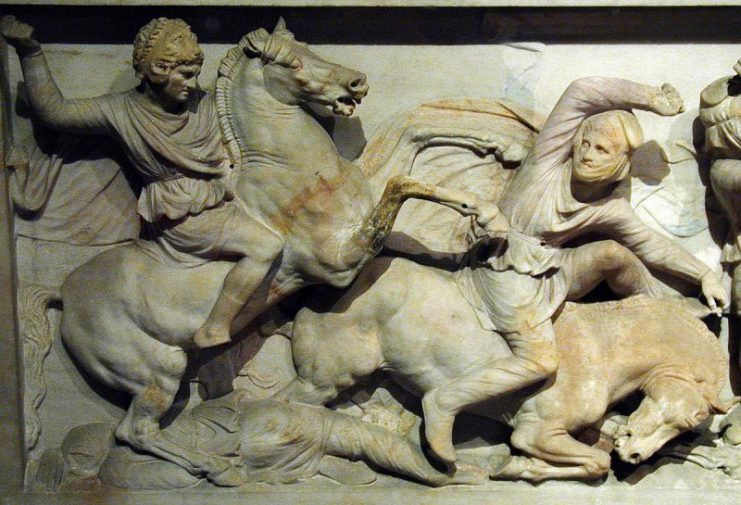
Alexander’s open-handed treatment of those who came to serve him was the wise adoption of the policy of Cyrus the Great, the founder of the Persian empire who had conquered Asia himself roughly 200 years before. As with Cyrus, it allowed Alexander to rapidly expand his territory without having to parcel up his forces into garrisons. It meant that trade was not interrupted by constant sieges, nor did he cause resentment by punishing resisters with reprisals. This goodwill ultimately led to increased wealth towards his war efforts, as well as a large, willing supply of manpower for his recruiters. Alexander was able to train regiments from across his empire; at the great review of his forces in 324BC, there were apparently 120,000 men in his army, including contingents from Arachosia, Bactria, Sogdia, India, Scythia, and Egypt. There was even a company of all-Persian cavalry, made up of noblemen who served willingly. It is hard to imagine this being possible without the co-operation of his subjects.
Officers
As much of a genius as Alexander was, his conquests were made possible because of the incredible work of his lieutenants and captains. Alexander was fortunate to inherit veteran commanders such as Parmenion, who held the left at the Granicus, Issus and Guagamela, and Antipater, who acted as viceroy in Europe, guarding against the Thracians and Spartans during Alexander’s conquests in Asia. As his campaigns wore on, new men also emerged who helped make his vision manifest, such as Hephaestion, Craterus and Perdiccas. These men would often be entrusted to lead sections of the army independently.
Here a comparison between Hannibal and Alexander is important: whenever Hannibal’s lieutenants were left to act independently, they would invariably be defeated by the Romans, leading to Hannibal’s eventual defeat. In Alexander’s case, having men who could act on their own without supervision allowed him to divide his forces for his lengthy guerrilla campaigns against Spitamenes and Bessus in modern-day Afghanistan, leading to the Macedonian victory.
This trust in the competence of his subordinates is also very important for another reason. Signalling an army was a difficult proposition in ancient times, which normally precluded complex plans. However, since Alexander could rely on his officers to deliver results, it meant he could enact advanced strategies to defeat his enemies. Nowhere is this better illustrated than at the Hydaspes. The forces of Alexander fought a battle at night, with units speaking languages, in a battle which involved river crossings, during monsoon season, to attack a well provisioned force with elephants and chariots, and still won.
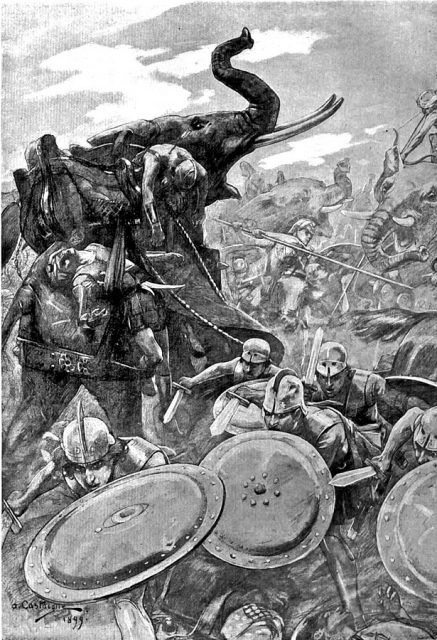
This incredible victory was brought about by the remarkable work of the officers. For example, Craterus had been left behind at the main camp, to give the illusion of the presence of Alexander’s main force in order to deceive the Indian king, Porus. When Porus’ army turned to face Alexander, Craterus was able to co-ordinate his own forces into another river crossing, which was then flanking Porus. Additionally, Coenus was able to launch a surprise attack on the Indian right, throw it into disarray, before riding behind the Indian lines and taking the Indian left in the rear, to co-ordinate with Alexander and Hephaestion’s units, in what is one of history’s greatest cavalry manoeuvres.
Professionalism
Ultimately, Alexander’s army represented a truly professional force, with an organised logistical corps, uniform equipment and frequent drill. Alexander’s men could form many different formations very quickly and were well trained. They had been blooded while subduing the tribes of the Balkans and the Greek cities, and were well versed in mountain and siege warfare. Constant drill also meant that soldiers could perform complex manoeuvres on a trumpet-call and trusted the skills of the men around them. Fighting mostly militia and conscript armies in Europe and Asia, these professional soldiers could trust in their abilities, compared to the poorly-equipped farmers who faced them. For example, at Chaeronea the Macedonian line staged a false retreat, which deceived the levies of Athens into breaking formation. On a trumpet-call the Macedonians uniformly turned face, reformed, and then slaughtered this militia, destroying the Greek right flank. This skill meant increased discipline, and bravery in the face of diversity; when the lines were overrun during Guagamela, the phalanx held firm until reinforcements were able to relieve them.
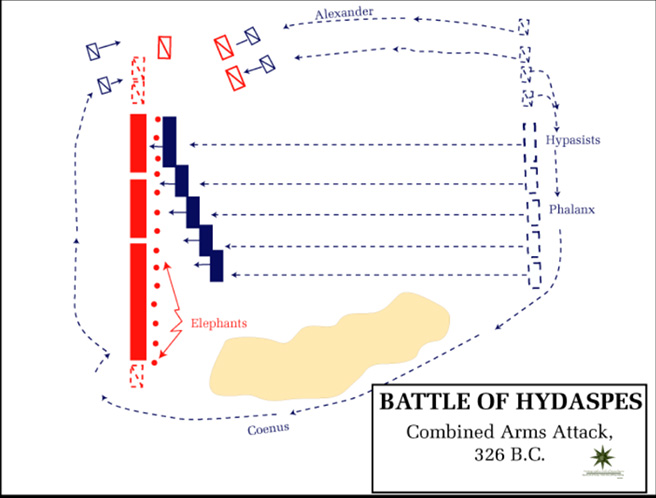
This approach to army building not only led to creation of the engineer corps, as described above, it led to the formation of a cadre of pages that allowed new crops of officers to be raised, allowing the lessons of the past to be passed on. This explains the rise of men such as Ptolemy and Seleucus, who had such incredible careers during and after Alexander’s reign. Comparable to Sandhurst or West Point in modern times, it guaranteed the competency of officers moving up the ranks, allowing for the level of independence and co-ordination we saw at the Hydaspes.
Conclusion
Alexander was certainly a genius with the heroic bravery that inspired his men to extraordinary heights again and again, however, we should not ignore that his tools of conquest – his army was sublime. Although constantly outnumbered and often surrounded, Alexander was always able to bring a local superiority of numbers; the one place at Issus Alexander outnumbered Darius was where Alexander’s elite forces were directly engaging the bodyguard of Darius himself, threatening the Persian king’s own life. Repeatedly we see that Alexander’s greatest gift was his constant ability to have numerical superiority at the most critical part of the battle: the enemy general. This was only made possible through Alexander’s outstanding army.
As we can see using other remarkable generals as examples, such as Hannibal or Belisarius, without the resources available to him, Alexander may have never conquered anywhere near as much as he did. Instead, he was able to quickly subdue his enemies, create momentum and use that momentum to rapidly overwhelm his opponents, with minimal attrition and establish the beginning of a new era that would last until the rise of Rome.
